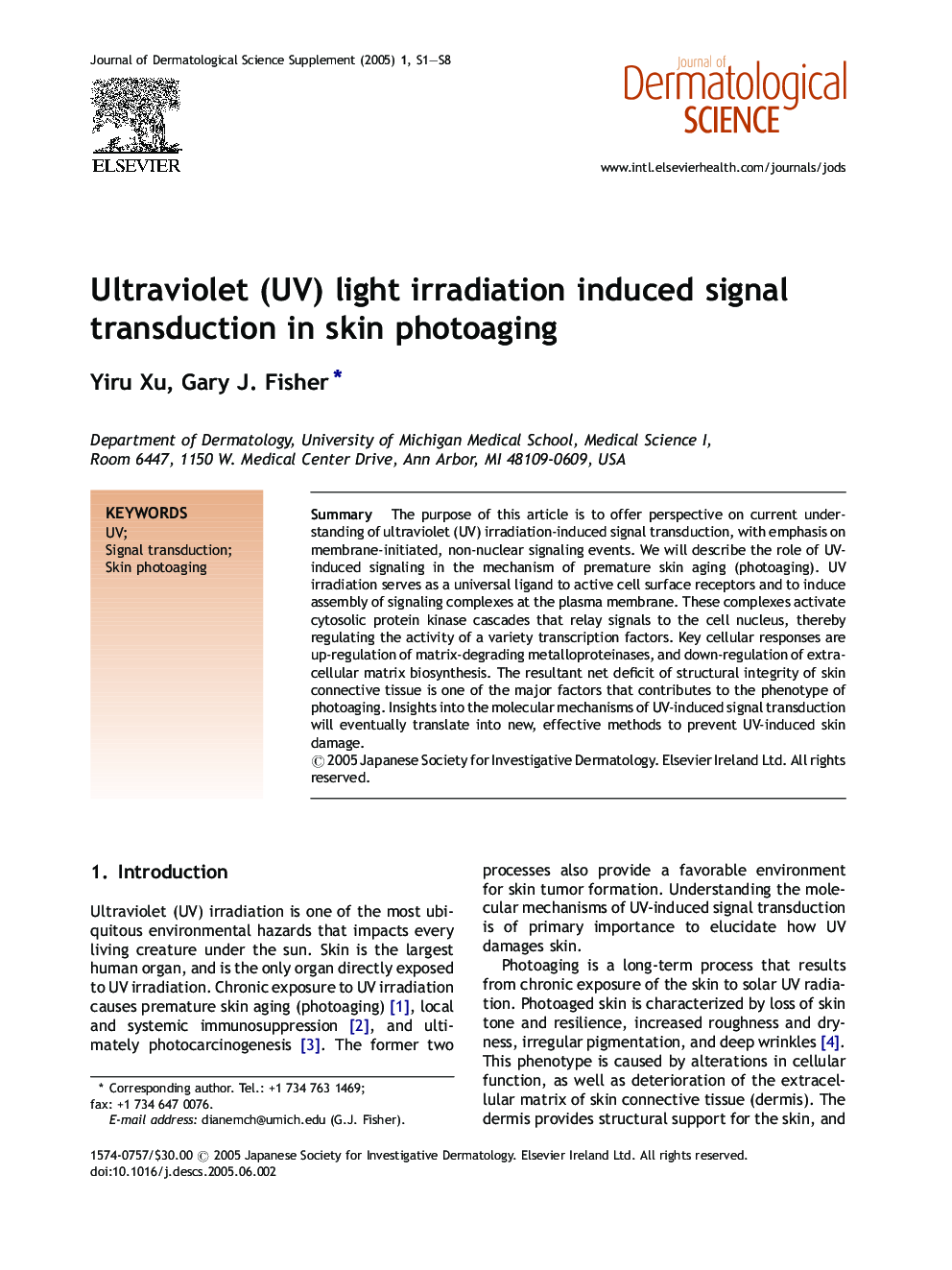| Article ID | Journal | Published Year | Pages | File Type |
|---|---|---|---|---|
| 9230064 | Journal of Dermatological Science Supplement | 2005 | 8 Pages |
Abstract
The purpose of this article is to offer perspective on current understanding of ultraviolet (UV) irradiation-induced signal transduction, with emphasis on membrane-initiated, non-nuclear signaling events. We will describe the role of UV-induced signaling in the mechanism of premature skin aging (photoaging). UV irradiation serves as a universal ligand to active cell surface receptors and to induce assembly of signaling complexes at the plasma membrane. These complexes activate cytosolic protein kinase cascades that relay signals to the cell nucleus, thereby regulating the activity of a variety transcription factors. Key cellular responses are up-regulation of matrix-degrading metalloproteinases, and down-regulation of extracellular matrix biosynthesis. The resultant net deficit of structural integrity of skin connective tissue is one of the major factors that contributes to the phenotype of photoaging. Insights into the molecular mechanisms of UV-induced signal transduction will eventually translate into new, effective methods to prevent UV-induced skin damage.
Keywords
Related Topics
Health Sciences
Medicine and Dentistry
Dermatology
Authors
Yiru Xu, Gary J. Fisher,
